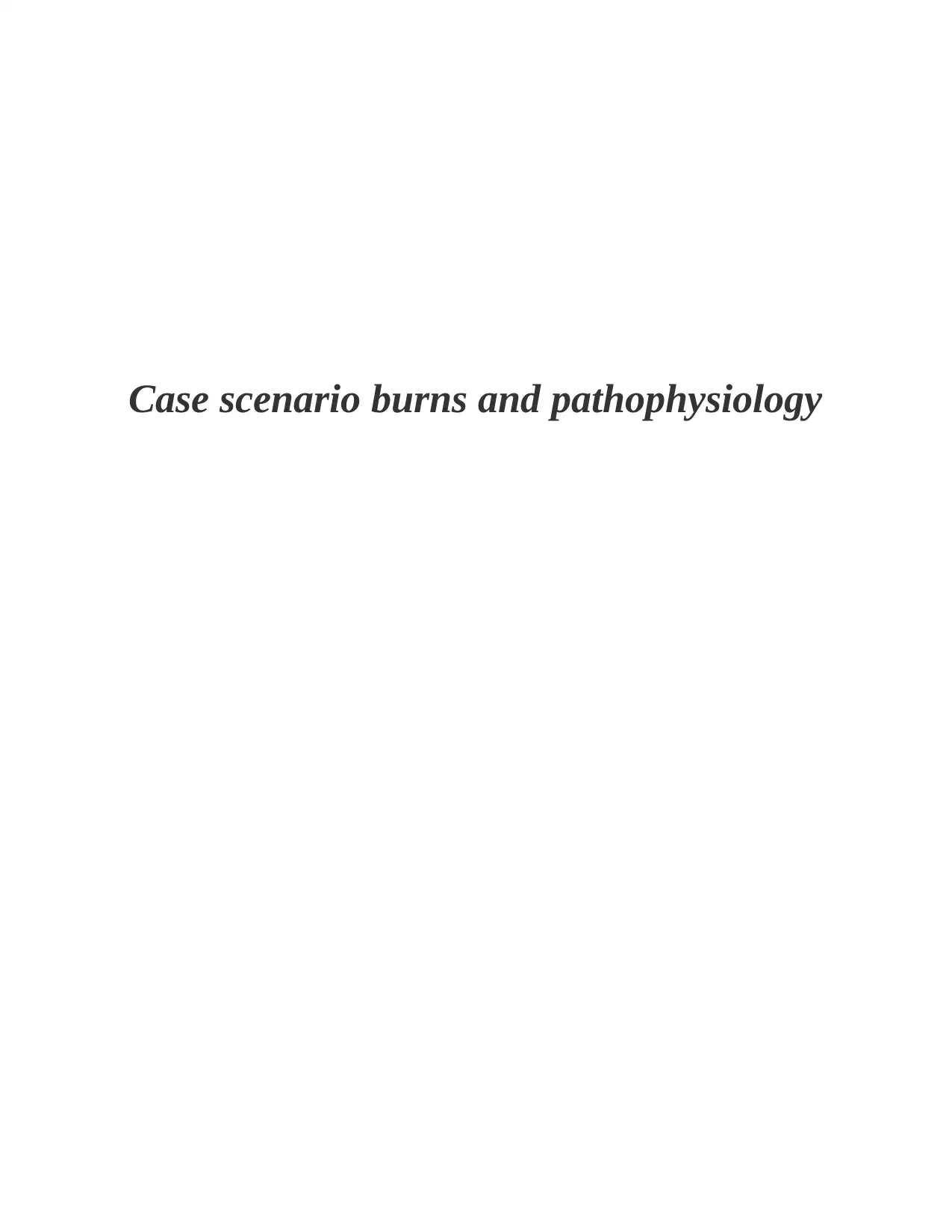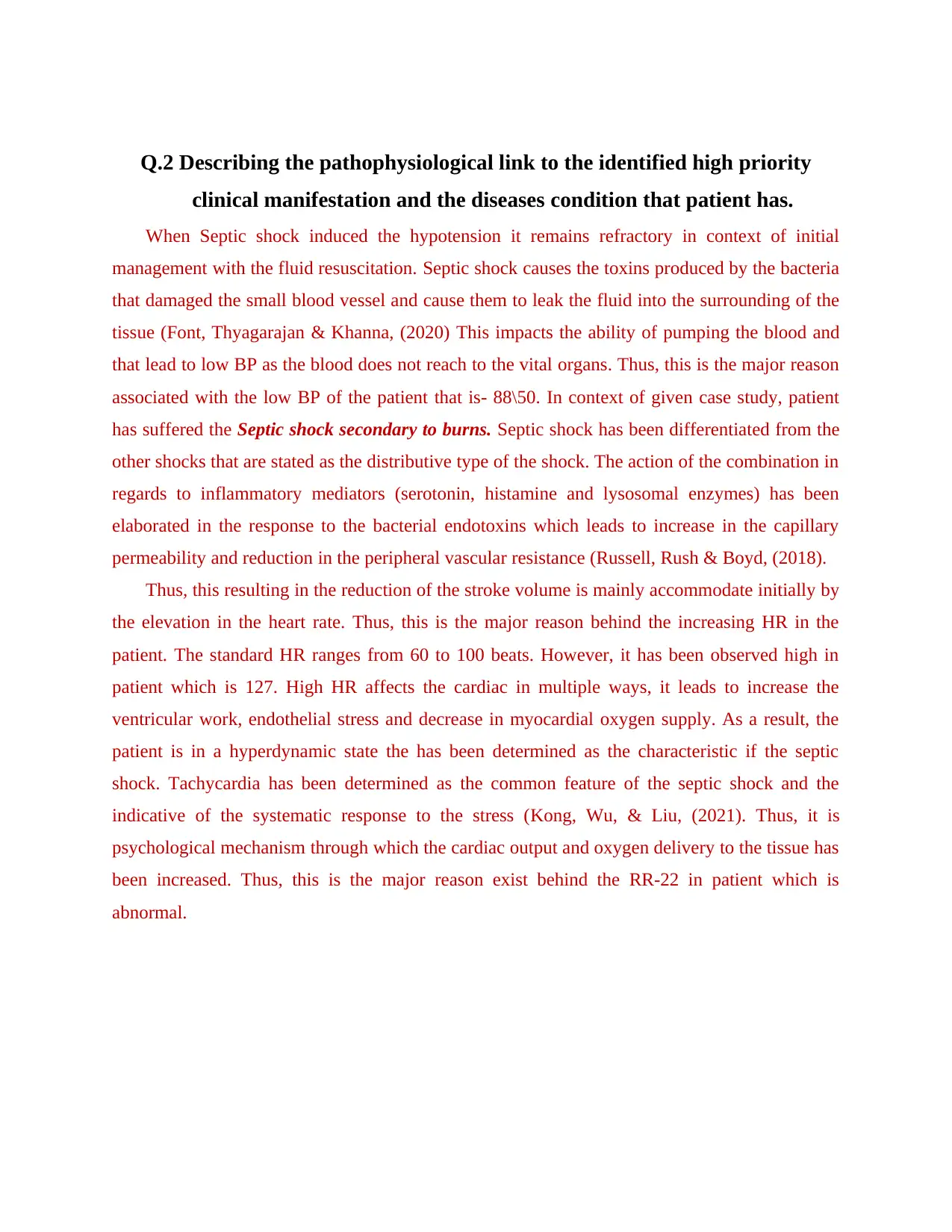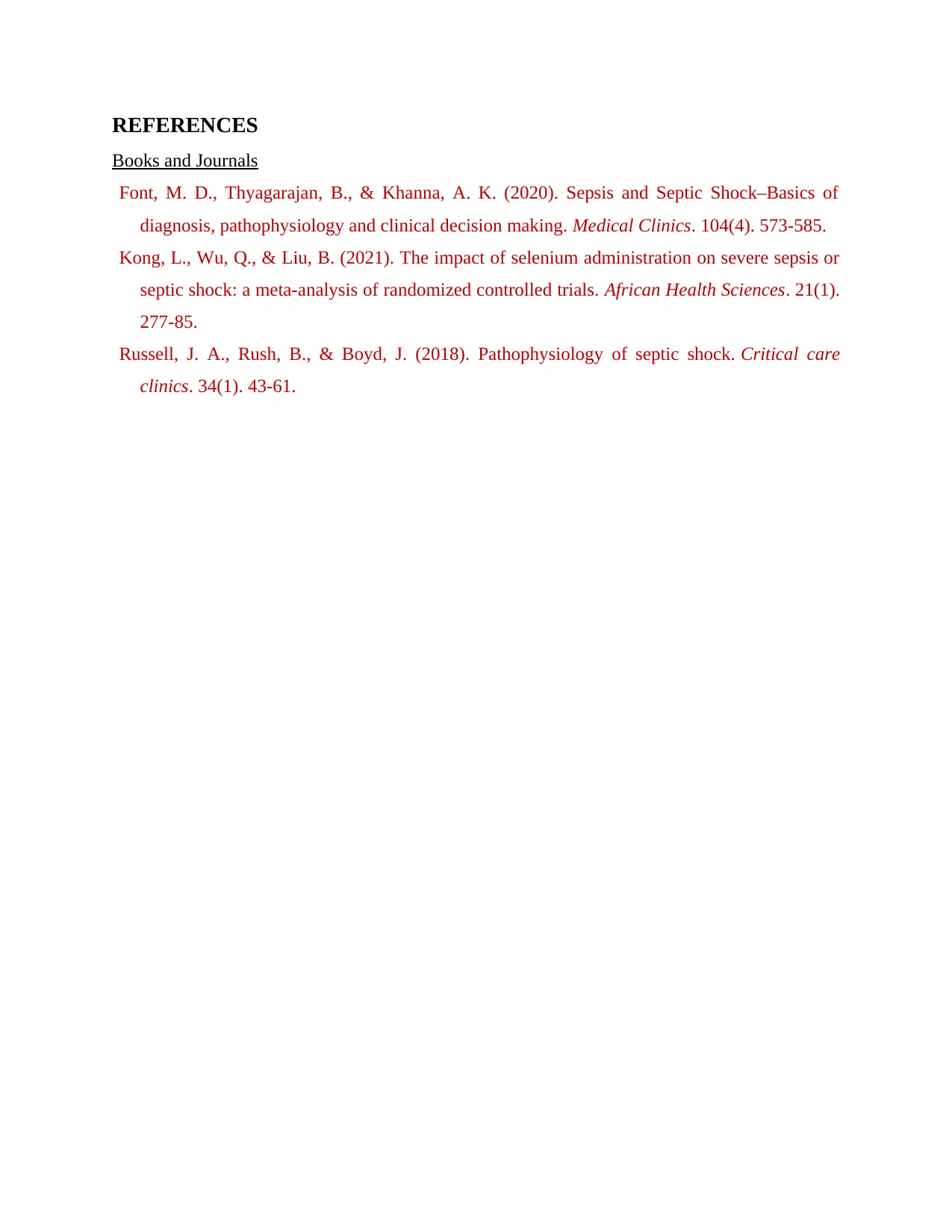Case Study Analysis: Septic Shock and Pathophysiology After Burns
VerifiedAdded on 2023/06/10
|4
|553
|383
Case Study
AI Summary
This case study examines a 62-year-old male, Mr. Reddy, who presented to the ED with 30% TBSA burns following a gas cylinder explosion. The study focuses on the pathophysiology of septic shock, a complication arising from the burns. It elucidates the link between septic shock and clinical manifestations such as hypotension (BP 88/50 mmHg) and tachycardia (HR 127/mt). The analysis highlights how bacterial toxins in septic shock damage blood vessels, leading to fluid leakage and reduced blood pressure. Furthermore, it explains how the body compensates for reduced stroke volume through an elevated heart rate, resulting in a hyperdynamic state. The case also touches upon the significance of increased respiratory rate (RR-22) as a response to stress and the body's attempt to improve oxygen delivery to tissues. The study references relevant literature to support the pathophysiological explanations.
1 out of 4






![[object Object]](/_next/static/media/star-bottom.7253800d.svg)